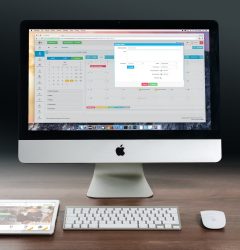
The decision to migrate from a traditional Enterprise Resource Planning (ERP) system to Atracio, a modern, cloud-based ERP, is a strategic move that can revolutionize your business operations. While the idea of change might seem daunting, the process of migrating is more straightforward than you might think. In this blog post, we’ll guide you through the simple steps to migrate from a traditional ERP to Atracio, ensuring a seamless transition.
Step 1: Define Your Objectives
Before embarking on the migration journey, clearly define your objectives. What specific challenges are you looking to address with Atracio? Whether it’s improved accessibility, scalability, or cost-efficiency, understanding your goals will guide the migration process.
Step 2: Assess Your Data
A critical aspect of migration is assessing and preparing your data. Start by identifying the data you need to move to Atracio. Clean and organize your data, ensuring its accuracy and completeness. This step is essential for a smooth transition and accurate reporting in your new ERP system.
Step 3: Choose the Right Atracio Plan
Atracio offers various plans tailored to different business needs. Select the plan that aligns with your requirements and budget. Atracio’s flexibility ensures that you can scale your plan as your business grows.
Step 4: Engage with Atracio Experts
Collaborate with Atracio experts who are well-versed in migration processes. They can help you create a migration plan, address any concerns, and provide guidance on best practices for a successful transition.
Step 5: Customize Atracio to Your Needs
Atracio is highly customizable to meet your specific business needs. Work with Atracio experts to configure the system according to your requirements, ensuring it aligns with your workflows and processes.
Step 6: Training and Onboarding
Prepare your team for the transition by providing comprehensive training on Atracio. Atracio offers user-friendly interfaces, but ensuring that your staff is comfortable with the new system is essential for a smooth migration.
Step 7: Test and Validate
Before fully migrating, conduct thorough testing to validate that data, processes, and configurations work as expected in Atracio. Identify and address any issues or discrepancies during this phase.
Step 8: Data Migration
Once you’re confident in the testing phase, proceed with the actual data migration. Atracio experts can assist you in safely transferring your data to the new system.
Step 9: Go Live
After successful data migration and final validation, it’s time to go live with Atracio. Monitor the system closely during the initial days to ensure everything runs smoothly.
Step 10: Post-Migration Support
Atracio provides post-migration support to address any issues or questions that may arise. Be sure to take advantage of this support to maximize the benefits of your new ERP system.
Step 11: Ongoing Optimization
Continuously assess and optimize your Atracio usage to take full advantage of its capabilities. Regularly engage with Atracio experts to stay up-to-date with updates and features.
Migrating from a traditional ERP to Atracio is a strategic move that can bring agility, efficiency, and scalability to your business. By following these simple steps and leveraging Atracio’s expertise, you can ensure a seamless transition and unlock the full potential of modern ERP technology. Embrace the future of ERP with Atracio and elevate your business operations to new heights.
Related Post
Recent Posts
Recent Comments
Categories

Transform your warehouses, fleet, and assets into a strategic advantage rather than an expense.


